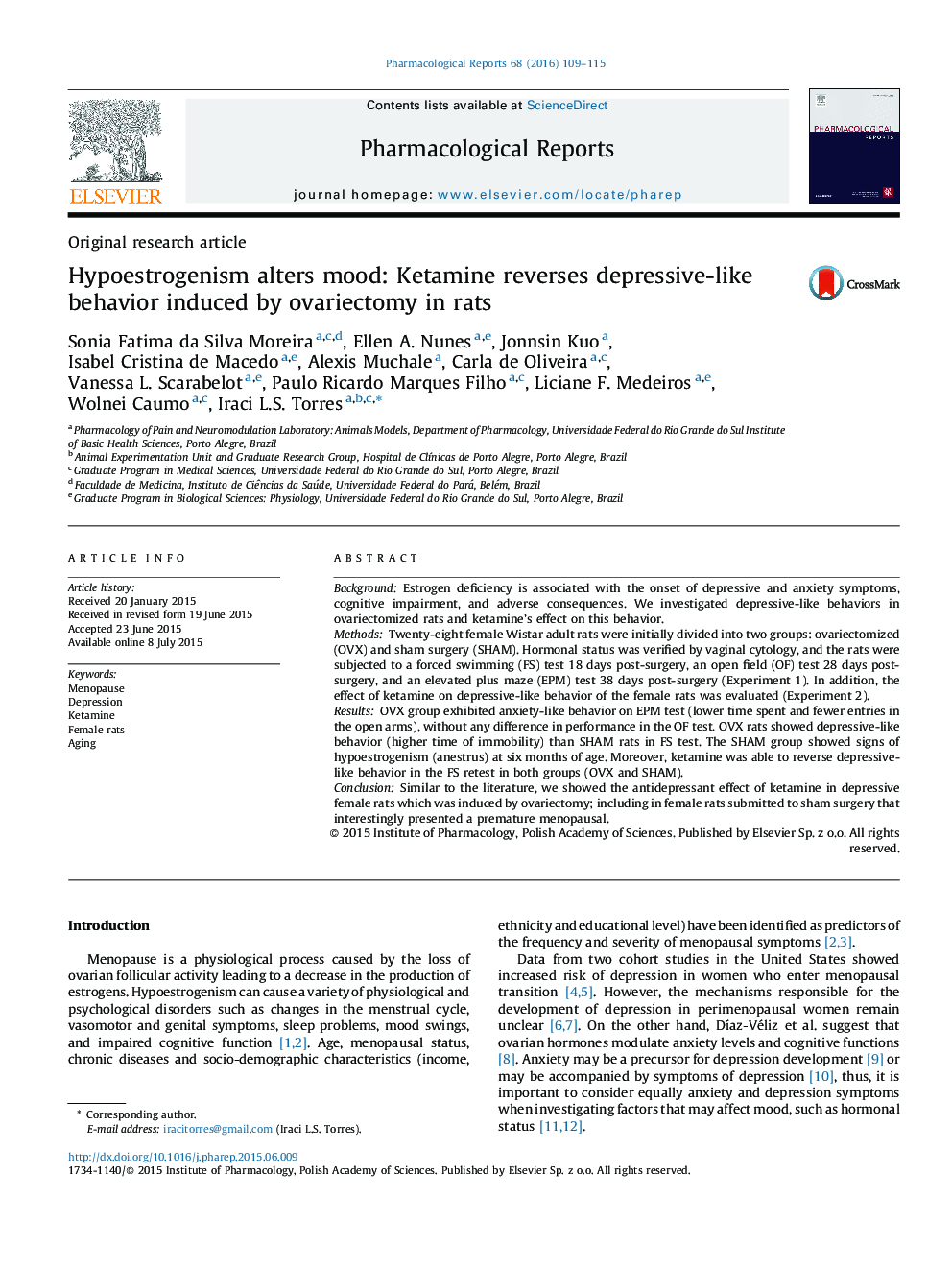| کد مقاله | کد نشریه | سال انتشار | مقاله انگلیسی | نسخه تمام متن |
|---|---|---|---|---|
| 2010408 | 1066973 | 2016 | 7 صفحه PDF | دانلود رایگان |
BackgroundEstrogen deficiency is associated with the onset of depressive and anxiety symptoms, cognitive impairment, and adverse consequences. We investigated depressive-like behaviors in ovariectomized rats and ketamine's effect on this behavior.MethodsTwenty-eight female Wistar adult rats were initially divided into two groups: ovariectomized (OVX) and sham surgery (SHAM). Hormonal status was verified by vaginal cytology, and the rats were subjected to a forced swimming (FS) test 18 days post-surgery, an open field (OF) test 28 days post-surgery, and an elevated plus maze (EPM) test 38 days post-surgery (Experiment 1). In addition, the effect of ketamine on depressive-like behavior of the female rats was evaluated (Experiment 2).ResultsOVX group exhibited anxiety-like behavior on EPM test (lower time spent and fewer entries in the open arms), without any difference in performance in the OF test. OVX rats showed depressive-like behavior (higher time of immobility) than SHAM rats in FS test. The SHAM group showed signs of hypoestrogenism (anestrus) at six months of age. Moreover, ketamine was able to reverse depressive-like behavior in the FS retest in both groups (OVX and SHAM).ConclusionSimilar to the literature, we showed the antidepressant effect of ketamine in depressive female rats which was induced by ovariectomy; including in female rats submitted to sham surgery that interestingly presented a premature menopausal.
Journal: Pharmacological Reports - Volume 68, Issue 1, February 2016, Pages 109–115
